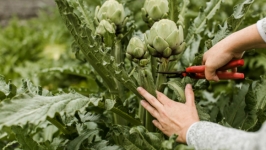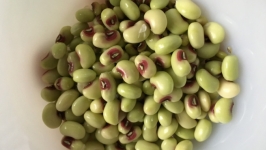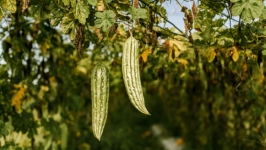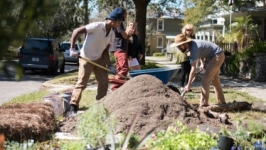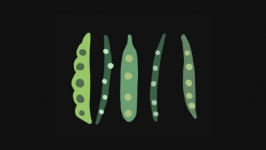Soil Microbes and Legumes: A Win-Win Relationship
If I say the word “bacteria,” what comes to mind? Ooze? Strep throat? Infected water? No hard feelings if pathogenic examples first come to mind, though there are also bacteria naturally existing in the environment that serve a crucial purpose for plants.
Although it may not be familiar to you, Rhizobium is a soil-dwelling bacterium beneficial to plants, and legumes in particular. This bacterium aids in producing plant-available nitrogen which is very limited in Florida’s sandy soils. The lack of organic matter and large-pore spaces in our local soil allow for easy leaching of nutrients after just a few inches of rain. Meanwhile, there’s a plethora of nitrogen in the atmosphere, but the plants cannot access it directly. That is where Rhizobium is beneficial to legumes. Once the microbes have found roots of leguminous plants such as peas and beans to colonize, nodules will form where the bacteria are thriving. Within these nodules, nitrogen in the atmosphere (N2) is converted to ammonia (NH3) in the soil for plants to utilize, improving yield and soil fertility.
What does this mean for soil health on local farms? In St. Johns County, farms produce many truckloads of snap beans for the Thanksgiving market – close to 1,000 acres are grown during the season. Planted in September, local potato farmers rotate their crops with legumes to help reduce disease pressures in the soil. Crop rotation is crucial to improve soil health while managing pests. While Rhizobium is naturally occurring in the soil, to jumpstart the process farmers often purchase inoculated seeds, which means the seed is coated with the bacteria. Depending on how the seed was treated, it may be powdery or varying in color from its natural state. This is normal, and because it is coated in a living biological organism, protecting the seeds from heat and direct sun is very important.
As a home gardener, if you already have seeds available but want to incorporate Rhizobium into your soil, you can also purchase just the inoculant and till it into the topsoil where your fibrous roots will be growing, prior to planting. Want to grow the same variety as your local producers? Plant Caprice, a bush green bean available from several seed company sources in bulk or small packets.
If you want to confirm that the microbes are actively growing and colonizing, dig a little bit around the roots to see if nodules are forming. A pinkish, internal color is a good indication of active bacteria. The shape and size will vary by crop (snap beans vs. peanuts). Keep your plants and soil thriving with a healthy microbial community!



